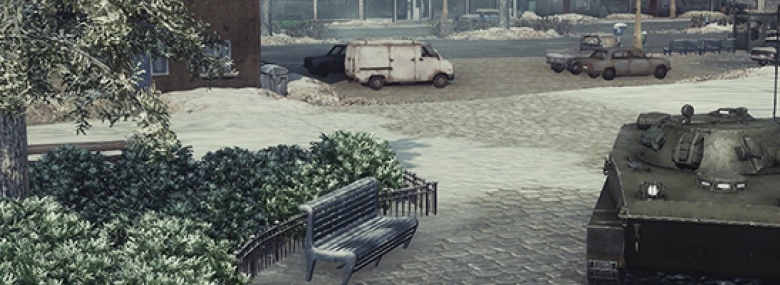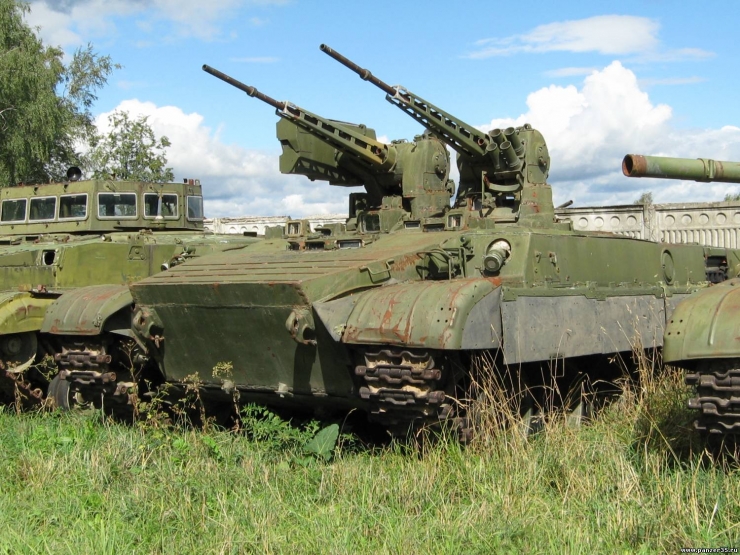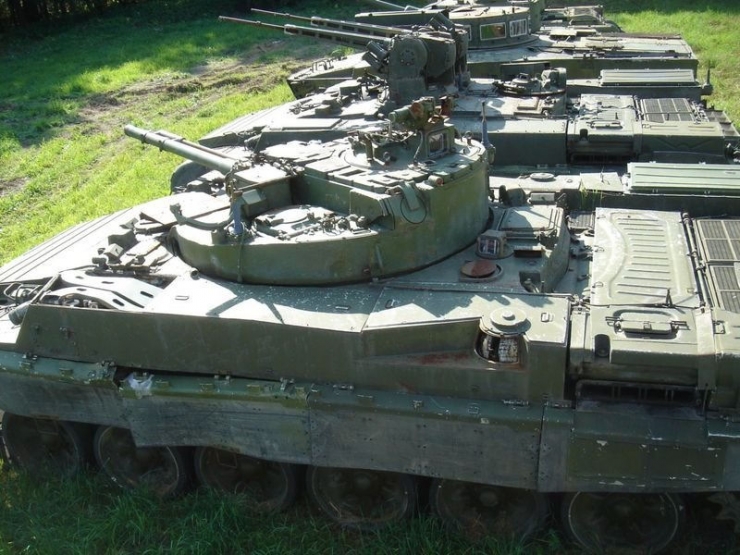
The idea of creating a heavily armored dedicated anti-infantry vehicle was not exclusive to the Soviet Union but it was the Soviet industry that started working on it intensively as early as in mid-80’s. The experience if Afghanistan and Chechnya taught the Soviets a painful, yet valuable lesson – even heavily armored vehicles armed with cannons were vulnerable to infantry in urban environment. The massive spread of and major improvements in infantry anti-tank weapons (mostly based on HEAT principle) further increased this thread to the point where for a certain time – especially in the west – it was thought that the tank would eventually become obsolete the way airships and armored trains did many decades before. Others however were actively looking for ways to tip the balance of scales in armored vehicle’s favor and one such idea was to create a heavily armored vehicle with anti-infantry armament to accompany the “classic” tanks.
Protecting your armored vehicles from enemy infantry required certain vehicle “features” not available to regular tanks. First and foremost, excellent gun elevation was required in order to deal with targets above you in hilly or urban environment. This was one of the first things learned by the Soviet troops in Afghanistan – enemy infantry would often be hiding on hilltops where the standard BMP-1 vehicles could not fire, since their elevation was insufficient and Soviet troops were forced to utilize anti-aircraft vehicles (which were well armed but very poorly armored, sometimes vulnerable even to small arms fire) as ground support. This issue was only mitigated by the arrival of the BMP-2.

Second very important requirement was to make the vehicle resistant to infantry weapons, specifically to HEAT launchers such as the famous RPG series. This called not only for thick armor (ideally composite) but also for the massive use of ERA, covering vulnerable parts of the vehicle – in Afghanistan however, such a technology was not available en masse.
Nevertheless, between 1985 and 1986, Chelyabinsk Tractor Plant started working on a program to develop a vehicle they called “mountain tank”, producing between 1987 and 1996 three distinct projects they thought suitable for the tanks support role –Object 781, Object 782 and Object 787 (sometimes referred to as Object 745 by certain Russian sources).
Object 781 and 782
Both of these projects were introduced in 1987 and were developed in Chelyabinsk under the leadership of V.L.Vershinsky. They were built on heavily modified T-72B hulls with especially the frontal part significantly reworked, but the biggest change by far was the fact that the vehicle sides now housed heavily armored watertight compartments carrying two stabilized 40mm grenade launchers and ammunition as well as other systems such as the air filtering, fuel tanks and batteries. This solution significantly increased the side protection of the hull.

Photography source: Warfiles.ru
Of the two such modified hulls, one (Object 781) was armed with a pair of 30mm 2A72 guns (each in a different, independent turret, each paired with a 7,62mm machinegun) as well as with an anti-tank guided missile system (Konkurs or Kornet) and either a 7,62mm or a 12,7mm machinegun mounted externally near the commander’s hatch. The second (Object 782) had a low profile two-man turret, armed with a low-recoil rifled 100mm 2A70 gun (the same the BMP-3 is equipped with) paired with one 30mm 2A72 cannon. The turret was also equipped with an additional 40mm grenade launcher (in addition to the one in the hull).
Both vehicles had large crews – the driver, gunner, commander, two grenadiers (plus two members of infantry in support to fire from more 7,62mm hull-mounted machineguns) – Object 782 for instance was theoretically capable of firing at 6 different targets at the same time.

Photography source: Globalsecurity.org
Both vehicles were tested from 1987 onwards in Chelyabinsk. The Object 781 won the initial testing and was selected over Object 782 (the project of which was cancelled, although the prototype exists to this day). The development of Object 781 was rated actually very well and continued at Chelyabinsk until the fall of the Soviet Union in 1991, when the project became the victim of the post-break-up chaos and was cancelled as well. Both prototypes eventually ended in the Kubinka museum.
Next attempt – Object 787
Even though the Object 781 research was cancelled, the war in Chechnya and the disastrous results of the tanks used in city environments re-started the development of the fire support vehicle in Russia. Once again, Chelyabinsk stepped up, developing a completely new vehicle between 1995 and 1996 called Object 787 (some sources refer to it as Object 754). One prototype was built in 1996. It was basically a T-72AV hull and turret (with the Kontakt-1 reactive armor as the tank designation suggests) but instead of the usual 125mm cannon, the vehicle was equipped with a pair of high-elevation 30mm guns, mounted on the sides of the turret (along with a pair of 12,7mm machineguns). The 30mm guns were paired with sets of unguided rockets (originally developed for helicopters) for added firepower. The vehicle was internally called “Gadyuka” (viper) by the designers.

Photography source: Kampfpanzer.de
The trials have shown excellent results of this vehicle (the trials were performed at Kubinka from 5.4. to 10.4.1997), but it too was to be cancelled – for the strangest of reasons. Initially, many high-positioned Russian officers were supporting the vehicle (including the chief of GABTU Colonel-General S.A.Maev, former Marshal of the Soviet Union, V.L.Kulikov and the main Ministry of Defense military advisor, Army General M.M.Zaytsev). The military started advertising the vehicle in television and radio, trying to gain as much support for the new vehicle class as possible. This did not sit well with the overseeing institutions, which accused the participants (including the vehicle designers themselves) of “publishing Russia’s military secrets”. An investigation was held and the entire process resulted in numerous personal changes in the Chelyabinsk Tractor Plant company as well as in the cancellation of the Object 787 development (as the accused designers were forbidden from pursuing the project further). The only prototype was transferred to Kubinka.
The Object 787 farce did slow the development of this class of vehicle considerably, but it did not stop it. Chelyabinsk Tractor Plant was out of the picture now and stopped developing this type of vehicle altogether, focusing only on tractor building. The idea however did not die and was intensively discussed between I.N.Rodionov (the Russian minister of defense between 1996 and 1997) and other members of the military. In the meanwhile, designers from Uralvagonzavod from Nizhny Tagil started working on a prototype of their own, introducing the first Object 199 “Ramka” prototype to public in 2000.






